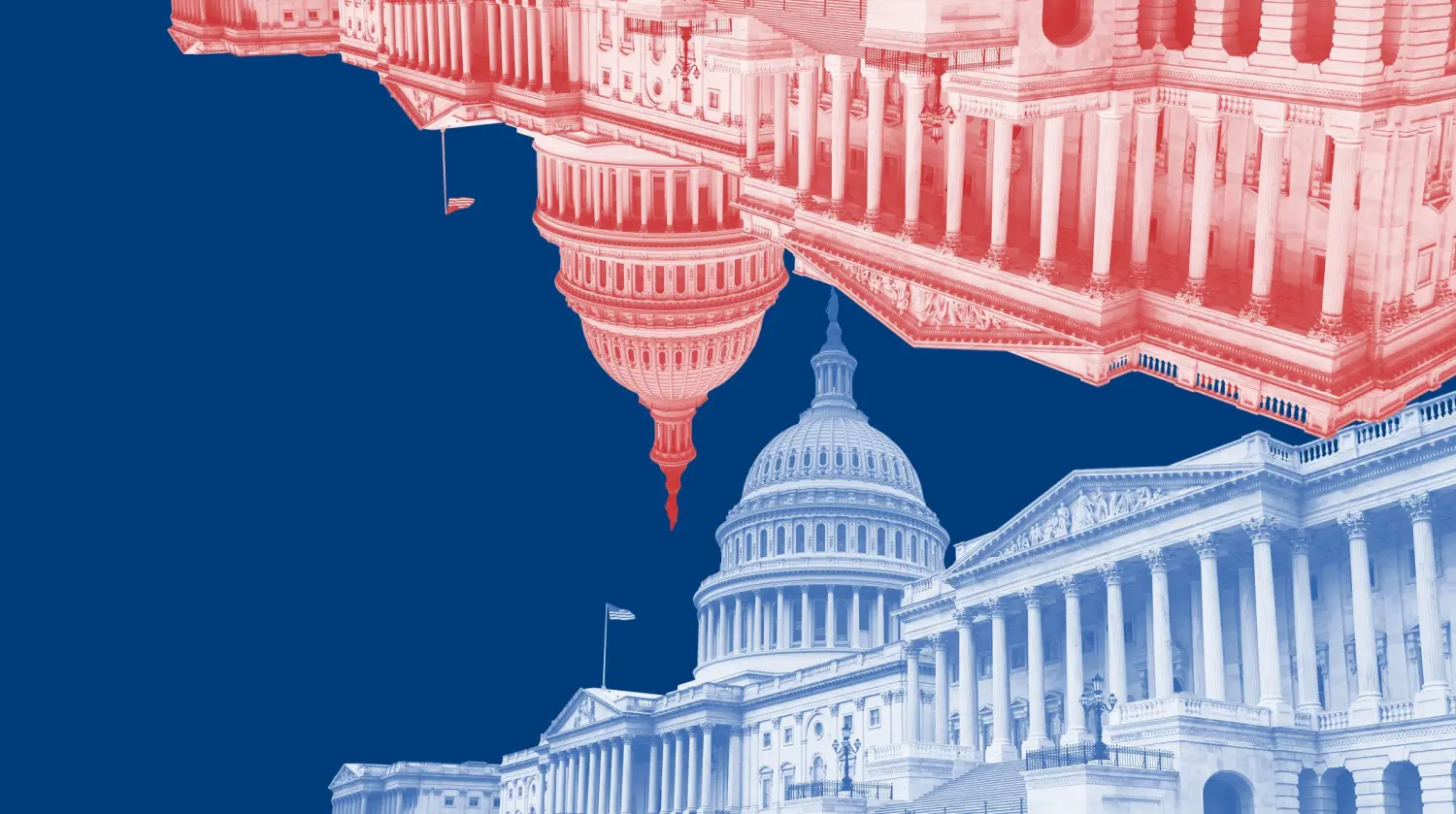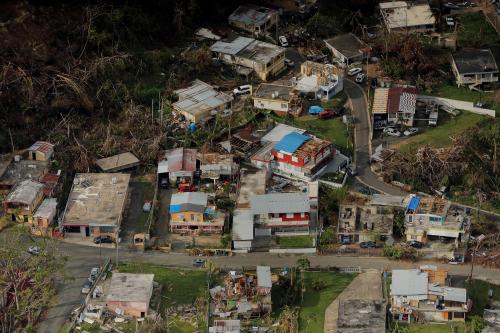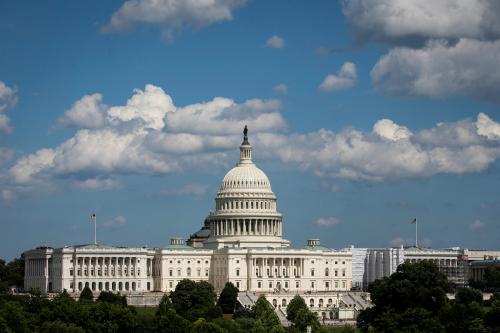This post is part of a series on the need for government reform and how to get it done. For more on this topic, visit the series page.
Donald Trump broke almost every norm in filling many of the government’s top jobs. He left appointee posts (some of them atop cabinet departments) empty in favor of the acting appointees who gave him more speed and flexibility, removed seasoned professionals who questioned his decisions, and oversaw the largest expansion of the senior hierarchy in recent history. He also set a modern record for what Kathryn Dunn Tenpas calls “A-Team” turnover in the White House.[1]
Yet, even as Trump undermined the appointments process, he showed little interest in confronting the bureaucratic bloat he criticized repeatedly during the campaign. “You know we have so many people in government, even me, I look at some of the jobs and it’s people over people over people,” he said in a Fox News interview only a month into his presidency. “There are hundreds and hundreds of jobs that are totally unnecessary jobs.”
Instead of attacking the bloat, Trump spent his first term adding new layers to the hierarchy and adding more leaders to each layer.[2] Like branches on a tree, new layers increased the height of government, while new leaders expanded its width. Absent strong oversight and aggressive trimming, this hierarchy grows naturally as Congress creates new positions in the appropriations process, presidents deploy their support staff, civil servants move steadily upward, and new titles such as “chief of staff” become de rigueur.[3] Figures 1 and 2 show the incremental growth in the number of layers and leaders between the fall of 1992 and summer of 2020.
Figure 1
Figure 2
Readers should note that departments and agencies vary in the number of layers and leaders. As the appendices accompanying this post show, the Defense Department had many more leaders than Homeland Security, but fewer layers between the top and bottom of the executive hierarchy, perhaps because of pressure to maintain a shorter chain of command.[4]
Despite variations based on agency employment and budget, the number of layers and leaders across government tends to even out over time as new titles spread. According to the sociological theory of “institutional isomorphism,” organizations that face similar pressures tend to adopt similar structures, which is exactly how the federal government looks.[5] Only one cabinet secretary had a chief of staff in 1981, for example, but all 15 had one in 2020; only one chief of staff to a secretary had a deputy chief of staff in 1981, but 14 had one in 2020.[6]
Trump may have been right in March 2017 that there was “duplication and redundancy everywhere” and “billions and billions” in waste just waiting to be streamlined home to taxpayers, but showed little interest an aggressive trimming. Trump’s budget office did produce 32 reorganization plans in 2018 that might have saved money, but none received a congressional hearing in part because they were linked to federal personnel cuts and vague promises of employee “reskilling” and in part because the new Democratic House majority (starting in January 2019) had no interest in trimming either.[7]
COVID-19 showed just how far Americans must go to find accountability in the federal hierarchy. Healthcare heroes waiting for personal protective equipment faced 18 layers between the top of the Department of Health and Human Services and the PPE at the Strategic National Stockpile. Small businesses waiting for Paycheck Protection support faced 16 layers between the top of the Treasury Department and the Small Business Administration’s program office, and families with loved ones in skilled nursing facilities faced 19 layers between the top of the Department of Health and Human Services and the division of nursing homes at the Centers for Medicare and Medicaid Services. The rest of the inventory can be found in the appendices attached to this post.[8]
Presidents also play a role in thickening through politicization, but Trump has yet to develop a strategy for leveraging such authority. He has taken much longer than Obama to fill his top jobs and has fomented turmoil at every turn in the vetting process. Obama started his first term with similar missteps, but eventually learned the system in time to take full advantage of the Senate’s 2012 decision to release 163 presidential appointments from its delay-ridden confirmation process. Obama moved quickly to fill 158 of the posts and eventually raised the numbers of noncareer senior executives’ lower-level confidential assistants.[9] Although the new appointments barely made a dent in the total thickening during his second term, Trump would have been wise to follow the lead.
The true cost of this thickening is not just in the missed signals that might have prevented an accident or failure. It is also in the lost communication that might have created a great achievement. As every preschooler knows, games of telephone and gossip always distort the message no matter which direction the whispers go. The games go badly for government, too, but are more artfully labeled as failures of imagination.
[1] Kathryn Dunn Tenpas, “Tracking turnover in the Trump administration,” Government Studies, Brookings Institution, September, 2020, https://www.brookings.edu/research/tracking-turnover-in-the-trump-administration/. See also James P. Pfiffner, “Donald Trump and the Norms of the Presidency,” Paper prepared for delivery at the Annual Meeting of the American Political Science Association, September 9-13, 2020.
[2] The figures discussed in this post are based on hand-coding of the federal government Yellow Books/Leadership Directories published in print by Monitor Publishing from the 1960s-1980s, Leadership Directories also in print from the 1990s to 2018, and by Leadership Connect online starting in 2019. The 2020 analysis was completed in July, 2020.
Readers are cautioned that the shift from print to online may have given Leadership Connect the cyber-space to add more names to its inventory. Although the additional space could help explain the large increase in number of leaders during Trump’s first term in office, the number of layers would be unaffected and the overall thickening would remain.
This analysis is restricted solely to layers within the Executive Levels I-V of the federal hierarchy. Because many titles carry specific references to a unit such as the Food and Drug Administration or function such as Assistant Secretary for Logistics, the titles presented here are equivalents to a specific Executive Level I-V such as Secretary, Deputy Secretary, and on down the chain of command.
I am particularly grateful to Gabrielle Gallo for her perseverance in searching the federal phonebooks for additions, subtractions, and innovations in federal titles. It is a particularly difficult research task that has grown more difficult with every update.
[3] Figure 3 combines the number of layers in each year with the number of occupants per layer and the total number of occupants overall. Trump had the largest number of layers (83), leaders (4,886), and the second largest number of leaders per layer (59), which gives him the second largest balloon on the chart and the highest position on the grid. Clinton had the largest balloon with 73 leaders per layer, but was far behind Trump overall.
[4] See: APPENDIX TABLE 1: LAYERS AND LEADERS BY DEPARTMENT, 2020. Appendices available here.
[5] Paul J. DiMaggio and Walter W. Powell, “The Iron Cage Revisited: Institutional Isomorphism and Collective Rationality in Organizational Fields,” in Powell and DiMaggio, eds., The New Institutionalism in Organizational Analysis (Chicago: University of Chicago Press, 1991), pp. 60‒79, quoted at pp. 63‒64, 67.
[6] See: APPENDIX TABLE 2: FEDERAL GOVERNMENT TITLES IN USE, SUMMER 2020. Appendices available here.
[7] For a summary of the 32 plans, see Harry B. Hogue, and Clinton T. Bass, ”Trump Administration Reform and Reorganization Plan: Discussion of 35 ‘Government-Wide’ Proposals, Library of Congress, Congressional Research Service, July 25, 2018, https://fas.org/sgp/crs/misc/reform.pdf
[8] See: APPENDIX TABLE 3: LAYERS AT THE TOP OF AGENCIES ENGAGED IN THE COVID-19 CRISIS. Appendices available here.
[9] See: APPENDIX TABLE 4: THE PRESIDENTIAL APPOINTEE COUNT, 1992-2020. Appendices available here.
The Brookings Institution is committed to quality, independence, and impact.
We are supported by a diverse array of funders. In line with our values and policies, each Brookings publication represents the sole views of its author(s).









Commentary
Federal bloat is at a 60-year high
October 5, 2020